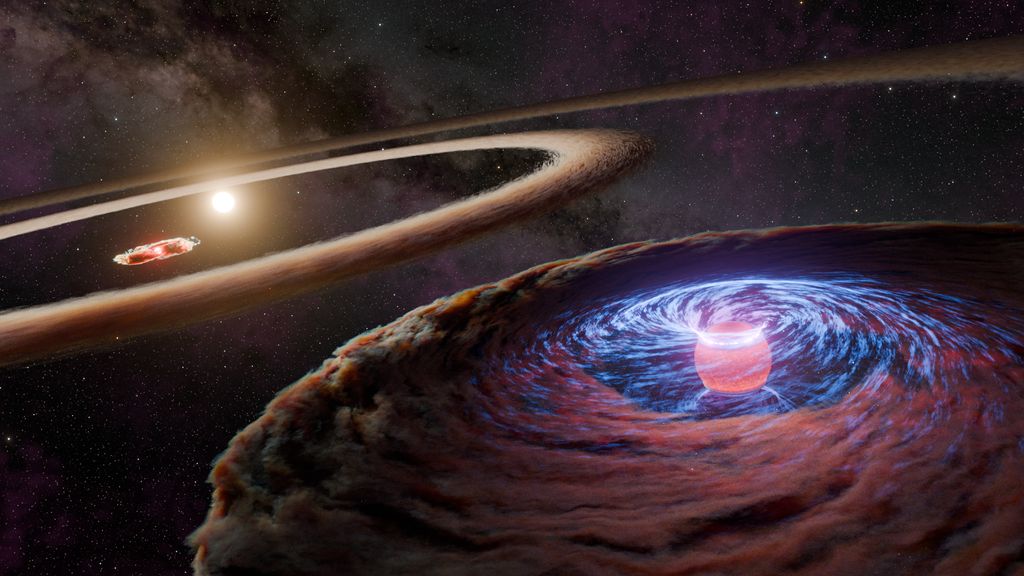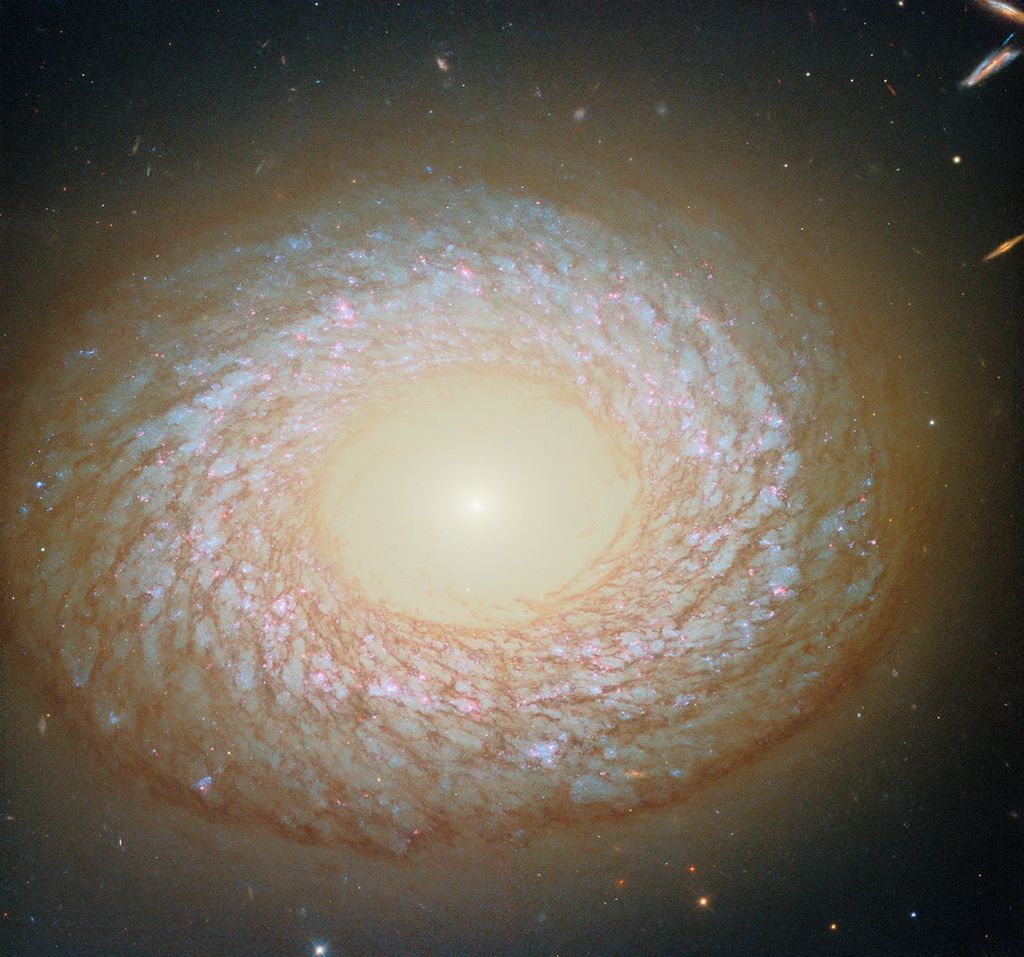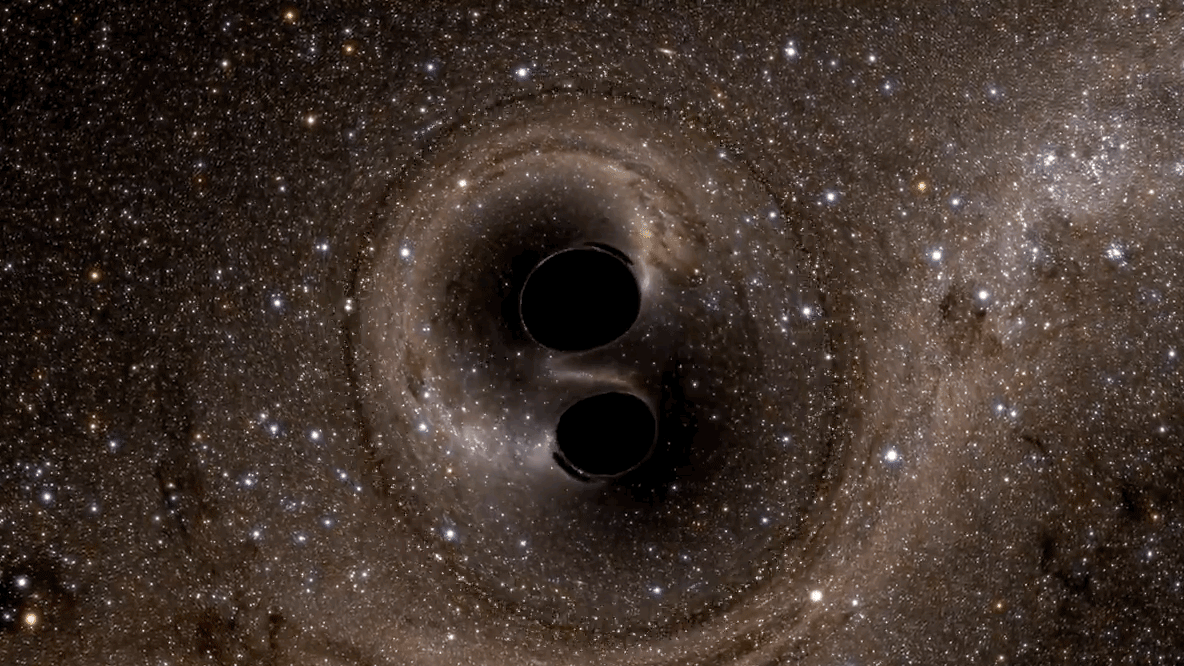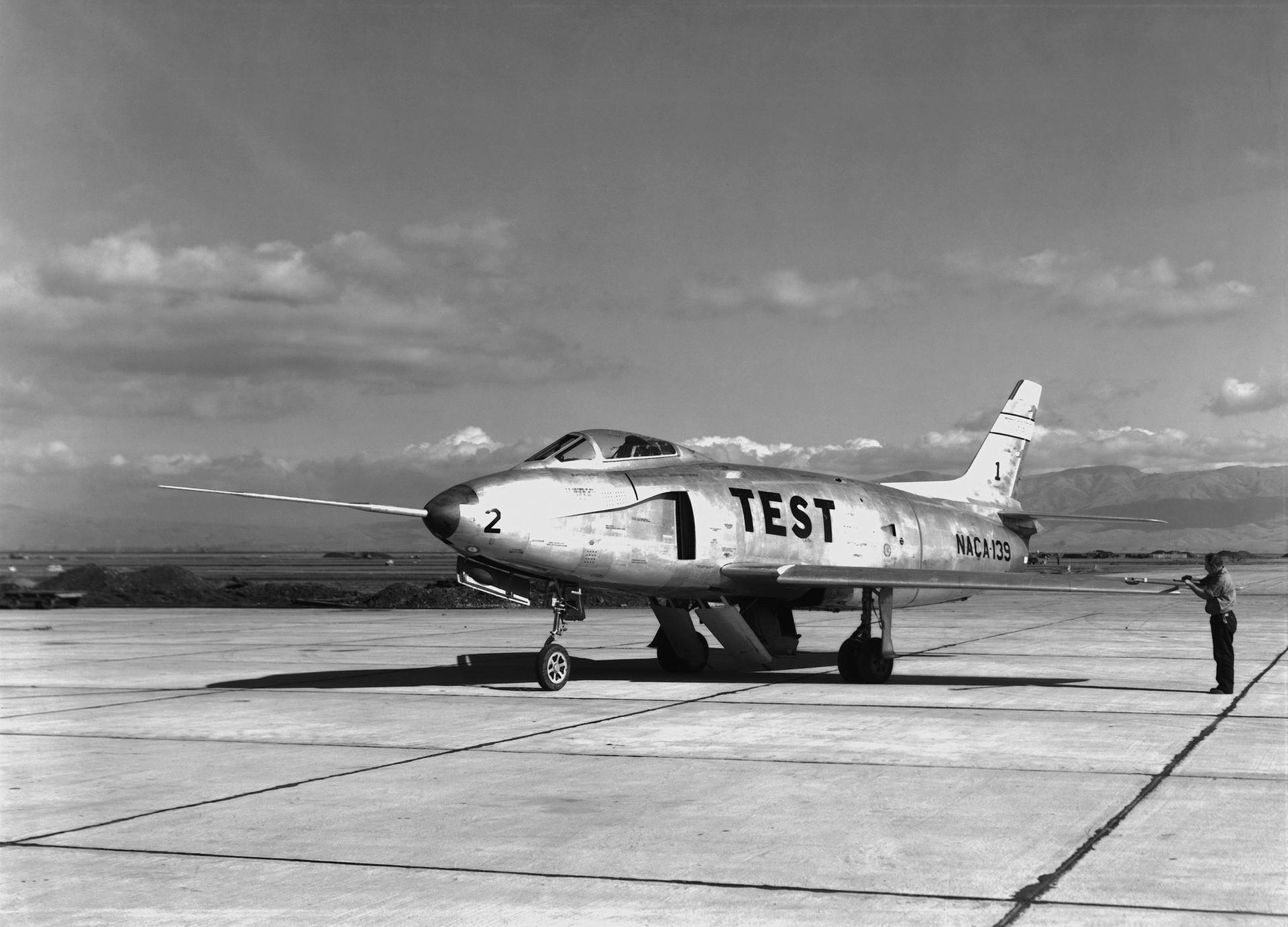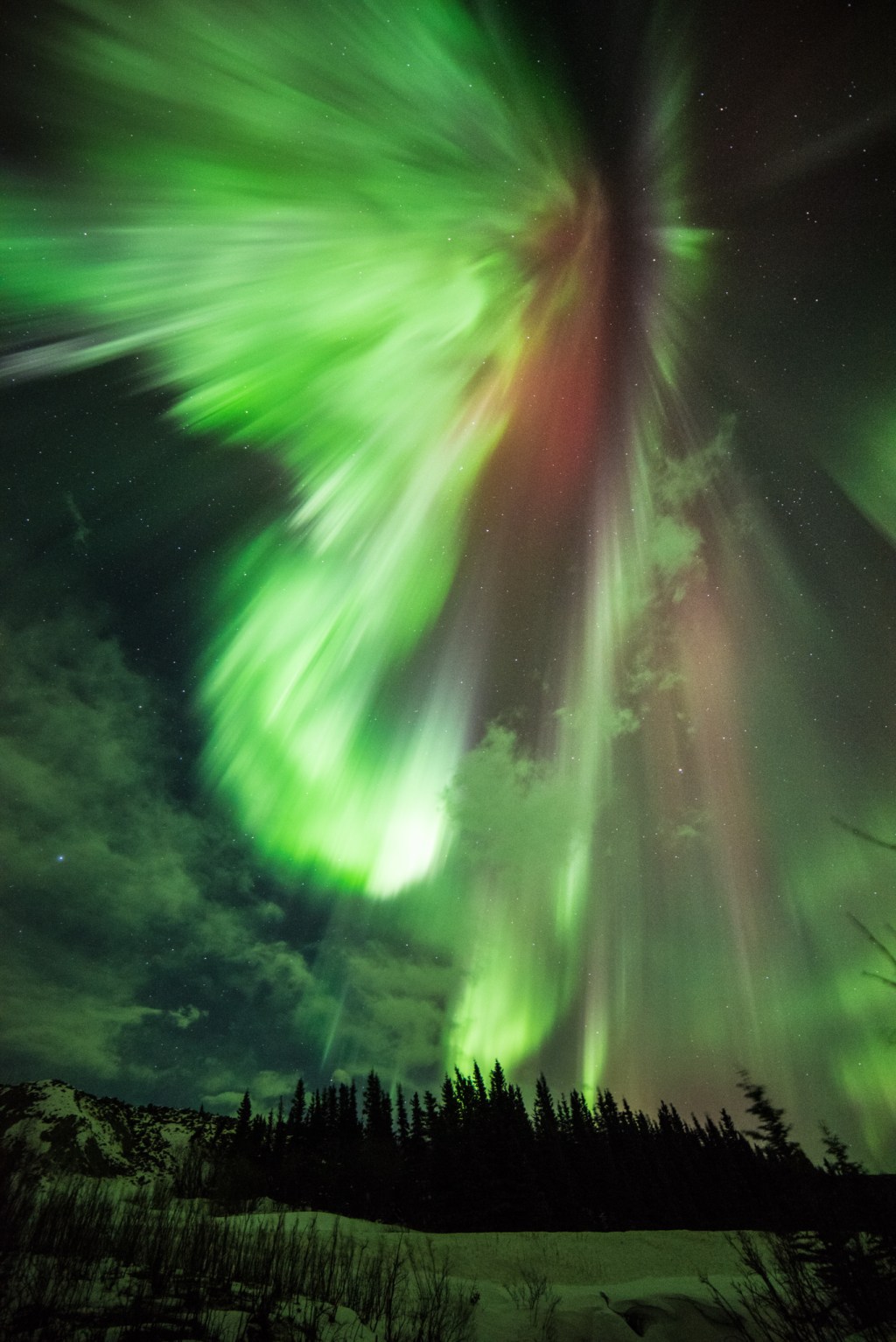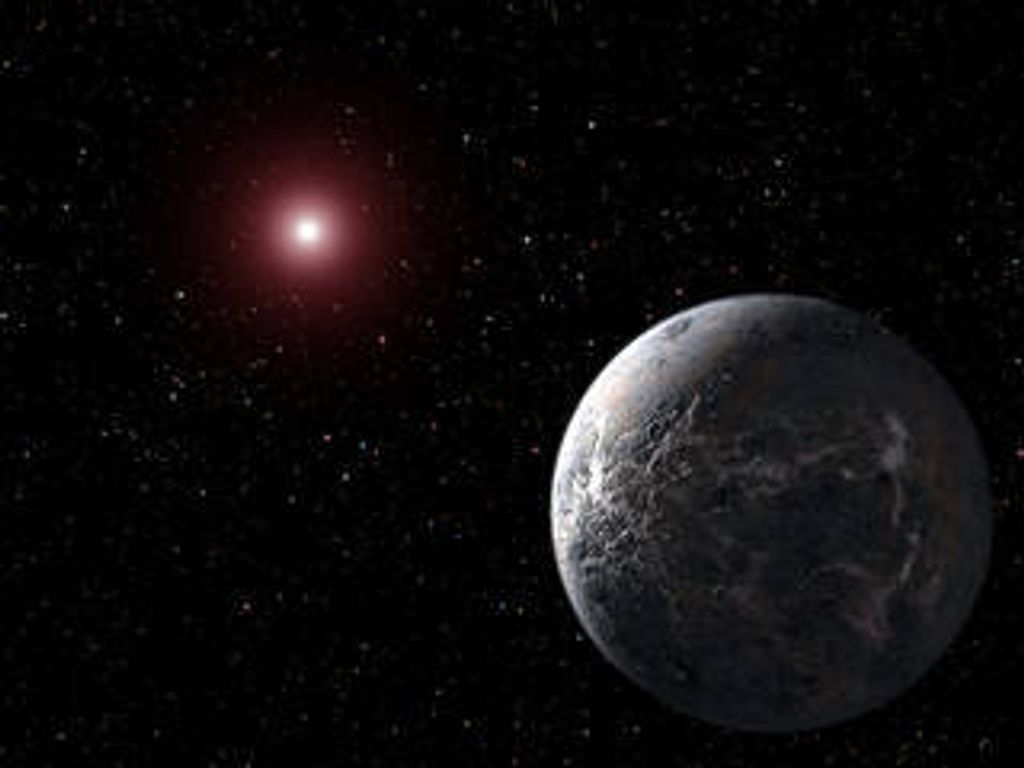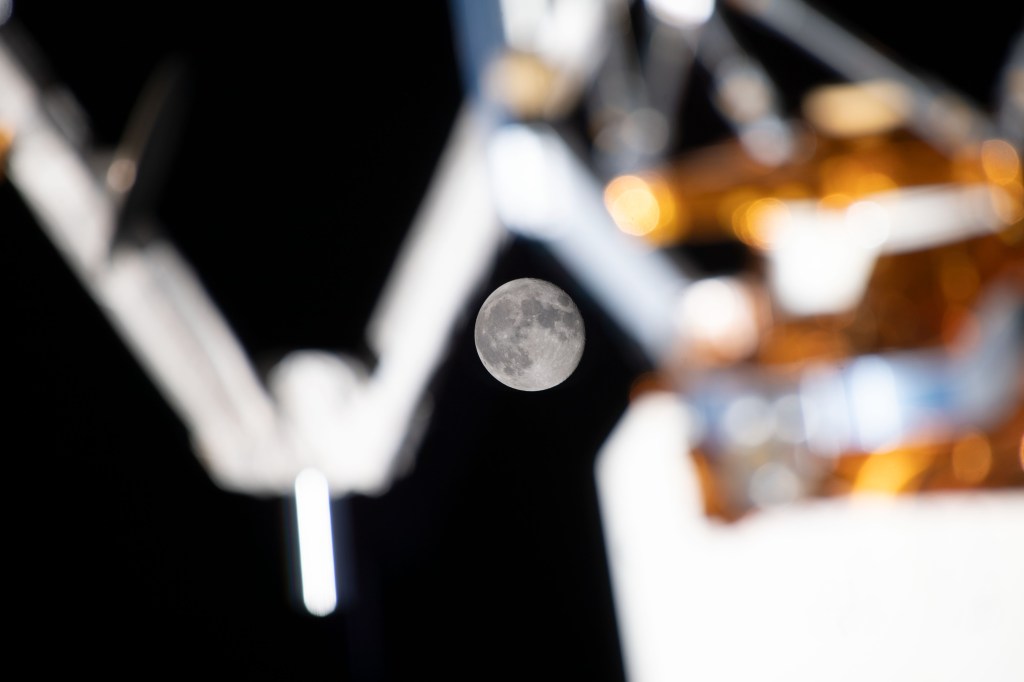1 min read
Ultra-compact Dwarf Galaxy M60-UCD1
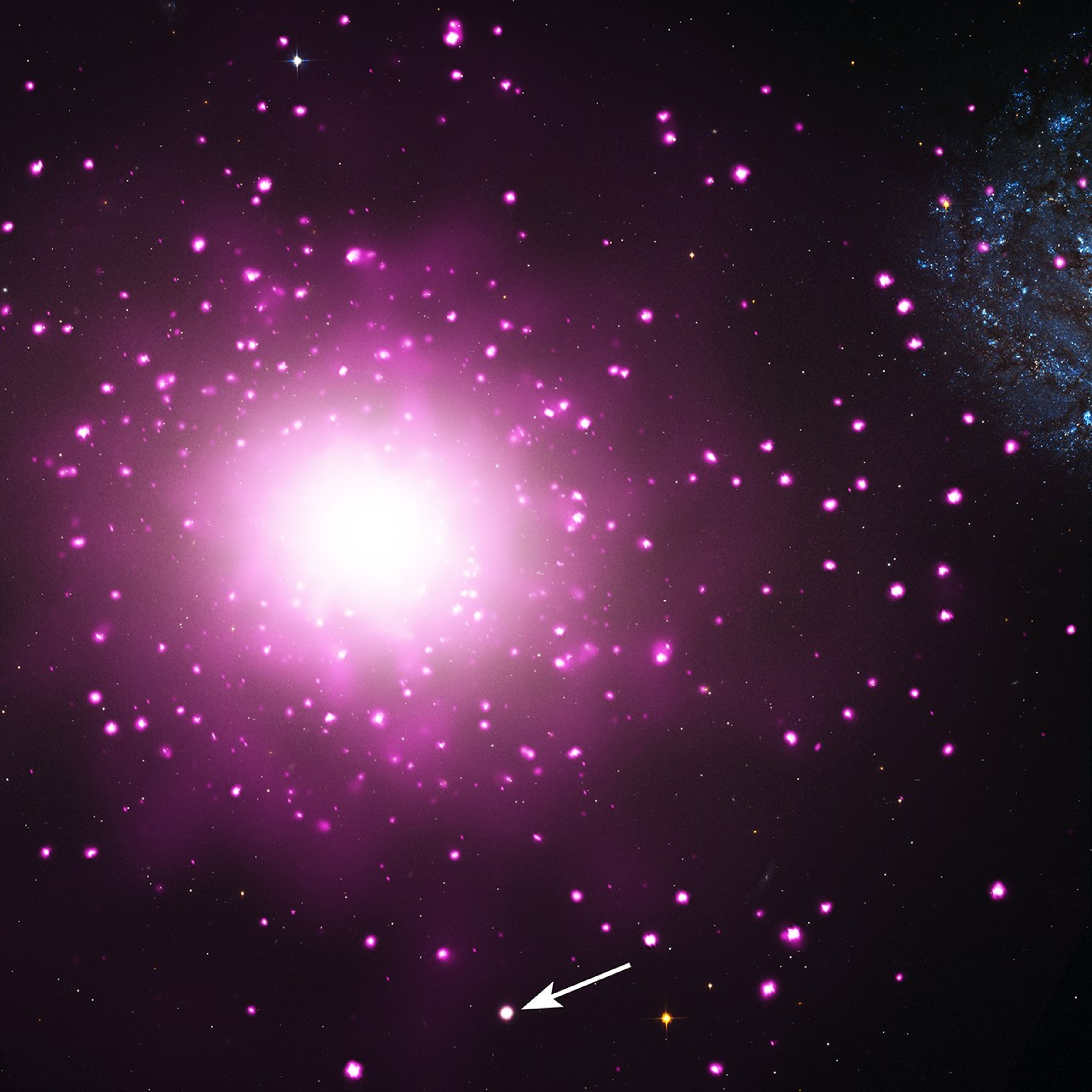
The densest galaxy in the nearby universe may have been found. The galaxy, known as M60-UCD1, is located near a massive elliptical galaxy NGC 4649, also called M60, about 54 million light-years from Earth.
This composite image shows M60 and the region around it, where data from NASA's Chandra X-ray Observatory are pink and data from NASA's Hubble Space Telescope are red, green and blue. The Chandra image shows hot gas and double stars containing black holes and neutron stars, and the Hubble image reveals stars in M60 and neighboring galaxies including M60-UCD1. The arrow points to M60-UCD1.
Packed with an extraordinary number of stars, M60-UCD1 is an "ultra-compact dwarf galaxy." It was discovered with Hubble, and follow-up observations were done with Chandra and ground-based optical telescopes.
It is the most luminous known galaxy of its type and one of the most massive, weighing 200 million times more than our Sun, based on observations with the Keck 10-meter telescope in Hawaii. Remarkably, about half of this mass is found within a radius of only about 80 light-years. This would make the density of stars about 15,000 times greater than found in Earth's neighborhood in the Milky Way, meaning that the stars are about 25 times closer.
The 6.5-meter Multiple Mirror Telescope in Arizona was used to study the amount of elements heavier than hydrogen and helium in stars in M60-UCD1. The values were found to be similar to our Sun.
Another intriguing aspect of M60-UCD1 is that the Chandra data reveal the presence of a bright X-ray source in its center. One explanation for this source is a giant black hole weighing in at some 10 million times the mass of the Sun.
Astronomers are trying to determine if M60-UCD1 and other ultra-compact dwarf galaxies are either born as jam-packed star clusters or if they are galaxies that get smaller because they have stars ripped away from them. Large black holes are not found in star clusters, so if the X-ray source is in fact due to a massive black hole, it was likely produced by collisions between the M60-UCD1 and one or more nearby galaxies. M60-UCD1's great mass and the abundances of elements heavier than hydrogen and helium are also arguments for the theory that galaxy is the remnant of a much larger galaxy.
If this stripping did occur, then the galaxy was originally 50 to 200 times more massive than it is now, which would make the mass of its black hole relative to the original mass of the galaxy more like the Milky Way and many other galaxies. It is possible that this stripping took place long ago and that M60-UCD1 has been stalled at its current size for several billion years. The researchers estimate that M60-UCD1 is more than about 10 billion years old.
These results appear online and have been published in the September 20th issue of The Astrophysical Journal Letters. The first author is Jay Strader, of Michigan State University in East Lansing, MI. The co-authors are Anil Seth from University of Utah, Salt Lake City, UT; Duncan Forbes from Swinburne University, Hawthorn, Australia; Giuseppina Fabbiano from Harvard-Smithsonian Center for Astrophysics (CfA), Cambridge, MA; Aaron Romanowsky from San Jose State University, San Jose, CA; Jean Brodie from University of California Observatories/Lick Observatory, Santa Cruz, CA; Charlie Conroy from University of California, Santa Cruz, CA; Nelson Caldwell from CfA; Vincenzo Pota and Christopher Usher from Swinburne University, Hawthorn, Australia; and Jacob Arnold from University of California Observatories/Lick Observatory, Santa Cruz, CA.
About the Object
- R.A. PositionR.A. PositionRight ascension – analogous to longitude – is one component of an object's position.12h 43m 39.96s
- Dec. PositionDec. PositionDeclination – analogous to latitude – is one component of an object's position.11° 33' 9.76"
- Object NameObject NameA name or catalog number that astronomers use to identify an astronomical object.M60, M60-UCD1
- Release DateSeptember 24, 2013
- Science ReleaseHubble and Chandra Find Evidence for Densest Galaxy in Nearby Universe
- Credit
Share
Details
Claire Andreoli
NASA’s Goddard Space Flight Center
Greenbelt, Maryland
claire.andreoli@nasa.gov

